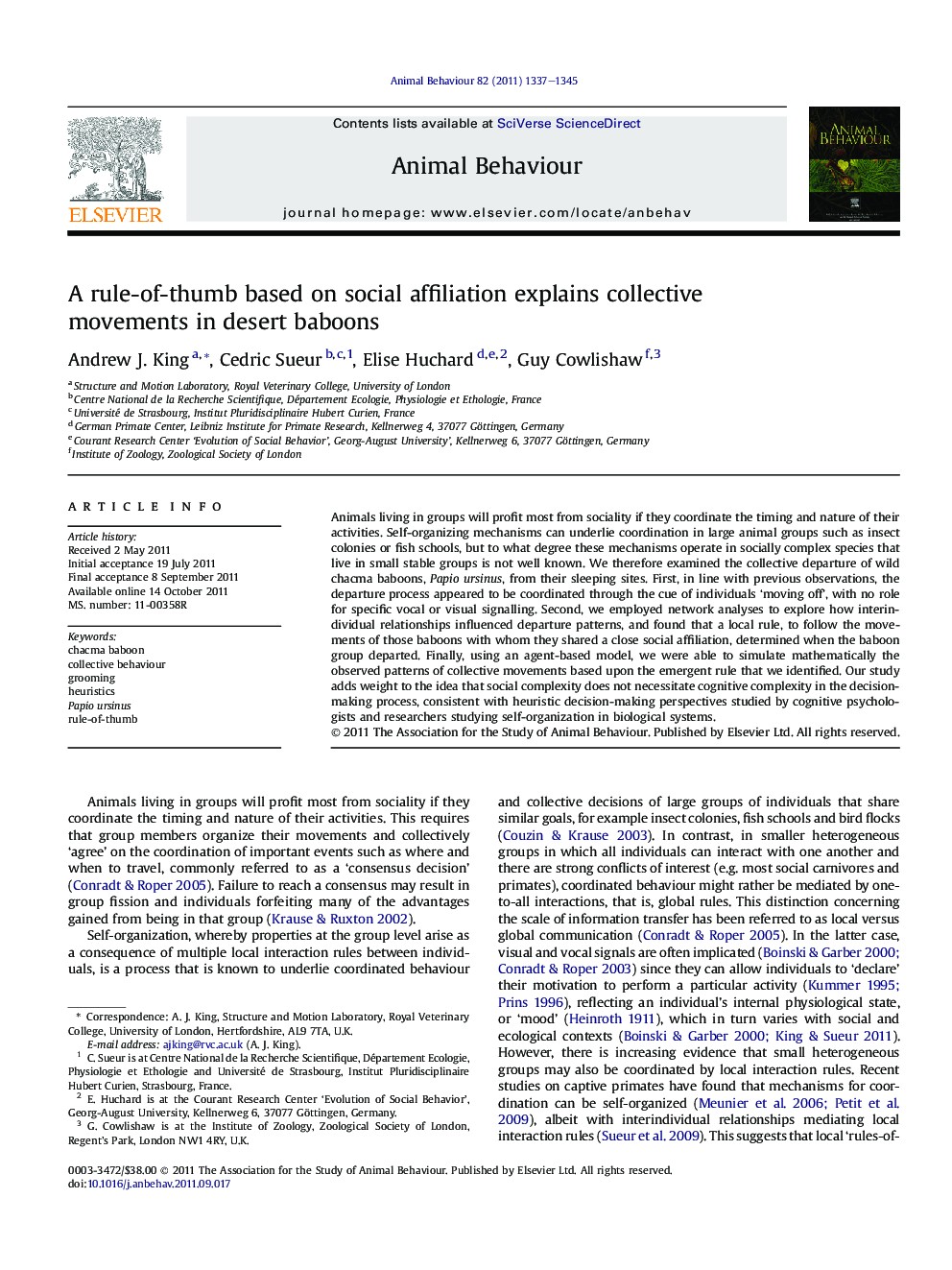| کد مقاله | کد نشریه | سال انتشار | مقاله انگلیسی | نسخه تمام متن |
|---|---|---|---|---|
| 2416868 | 1104300 | 2011 | 9 صفحه PDF | دانلود رایگان |

Animals living in groups will profit most from sociality if they coordinate the timing and nature of their activities. Self-organizing mechanisms can underlie coordination in large animal groups such as insect colonies or fish schools, but to what degree these mechanisms operate in socially complex species that live in small stable groups is not well known. We therefore examined the collective departure of wild chacma baboons, Papio ursinus, from their sleeping sites. First, in line with previous observations, the departure process appeared to be coordinated through the cue of individuals ‘moving off’, with no role for specific vocal or visual signalling. Second, we employed network analyses to explore how interindividual relationships influenced departure patterns, and found that a local rule, to follow the movements of those baboons with whom they shared a close social affiliation, determined when the baboon group departed. Finally, using an agent-based model, we were able to simulate mathematically the observed patterns of collective movements based upon the emergent rule that we identified. Our study adds weight to the idea that social complexity does not necessitate cognitive complexity in the decision-making process, consistent with heuristic decision-making perspectives studied by cognitive psychologists and researchers studying self-organization in biological systems.
► We examined the collective departure of wild desert baboons from their sleeping sites.
► The departure process was coordinated by baboons following their ‘friends’ cue to move.
► Highly social individuals were more often followed, elevating them to leadership roles.
Journal: Animal Behaviour - Volume 82, Issue 6, December 2011, Pages 1337–1345